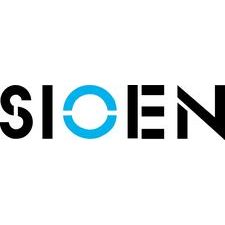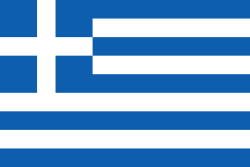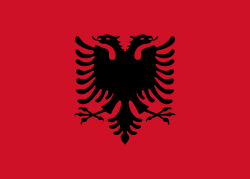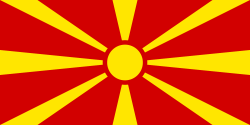Marex επιβραδυντικά φλόγας, anti-static hi-vis rain Σακάκι
Optimal visibility, high-quality protection and extremely functional, that is how our customers describe the Marex. This rain parka with water-repellent outer fabric is flame retardant and anti-static, provided with a detachable sleeveless flame retardant fleece lining with inside pocket. Inside, the rain parka has one inside pocket, while on the outside it has two loops for gas detection meters, two patched pockets, one Napoleon pocket, sleeve narrowing and a cord in the hem. The hood can be stored in the standing collar. The parka has been fitted with reflective FR strips on the arms, waist, back and chest.
Features & design
Exterior
Straight collar
Foldaway hood in collar
Zip closure under flap with touch & close fastening
2 patched pockets
1 Napoleon pocket
2 loops for gas detectors
Round sleeves
Sleeve narrowing by press studs
Drawstring in hem
Flame retardant reflective tape (50mm)
Interior
Fixed flame retardant cotton lining
1 inside pocket
Detachable lining
Detachable flame retardant fleece lining in body
Without sleeves
Not to be worn separately
1 inside pocket
Fabric
Sio-Start™ Fr Ast: 100% polyester fabric with 100% FR PU coating + AST; ± 250 g/m²
European Standards
EN ISO 14116 : 2015 / Outer : IND. 1 - Inner : IND.3
EN 1149-5 : 2018
EN 13034 : 2005 + A1 : 2009 Type PB [6]
EN ISO 20471 : 2013 +A1 2016 / Class 3
EN 343 : 2019 / Class 3-3-X
EN ISO 13688 : 2013
Detachable lining: EN 14058 : 2017 / Class 1 1 x x

SIOEN Apparel
Sioen produces technical apparel for many different markets where people work in circumstances where safety, comfort and protection are major issues. Professional protective clothing — all weather, high visibility, multi norm, food and cold storage 1. SIP Protection — Forestry clothing. 2. Sioen Firefighter clothing. 3. Mullion — Floatation suits and life jackets. 4. Ursuit — Professional drysuits & diving suits. 5. Sioen Ballistics — Stab, slash and bullet proof garments. 6. Baleno — Outdoor leisure wear, hunting and fishing garments.
EN ISO 20471 Hi-Vis Class 3
EN ISO 20471 is divided into three classes, the requirement for the area consisting of reflectors and fluorescent materials – that determines which class you need to choose. Minimum areas of visible material in m². Class 3: Reflective Tape = 0.20m², Fluorescent material = 0.80m². Class 2: Reflective Tape = 0.13m², Fluorescent material = 0.50m². Class 1: Reflective Tape = 0.10m², Fluorescent material = 0.14m². The highest class is class 3. There are two ways to attain class 3. Either choose an EN ISO 20471 product that is rated class 3 on its own (e.g. a jacket) or choose two products that together are class 3 certified.Details
EN ISO 14116 Limited Flame Spread
Protective clothing complying with this standard is intended to protect workers against occasional and brief contact with small igniting flames in circumstances where there is no significant flame hazard and without the presence of another type of heat. Three different categories for flame spread, Index 1, 2 and 3. Index 1: garments should not be worn next to the skin. They must be worn over Index 2 or 3 garments. Index 2 or 3 garments can be worn next to the skin.Details
EN 1149 Anti-Static (ATEX)
This standard specifies PPE Clothing used in explosive environments (i.e. ATEX) where there is a risk that the garments could create sparks (source of ignition), which in turn could ignite explosive materials. Anti-Static garments marked EN 1149-5 are intended to be worn in Atex zones 1, 2, 20, 21 and 22. In oxygen enriched atmospheres or in zone 0, the Anti-Static garments should not be used without first being approved by a qualified Safety Engineer, as wear and tear can affect the protection of the garment and it is crucial that they are worn the correct way in these environments.Details
Treated FR Garments
FR treated fabrics are based on cotton, blended with polyester, para-aramid or polyamide. These fabrics get their FR property from the chemical treatment that is applied to the fabric. This chemical treatment is executed in such a way that it fully penetrates the fiber and as such is bonded throughout the entire fabric. As a result of this treatment, the fabric becomes flame retardant and keeps this property during the lifetime of the garment. PROS: very good protection against molten metal, good protection against heat and ARC, relatively cheap, good value for money in dirty environments where expected lifespan is not very long. CONS: wash fastness is typically not very good (pale look after several washes), to achieve similar FR properties as inherent FR the fabrics typically become a bit heavier and therefore tend to be a bit less comfortable.Details
Share this product:
Once the user has seen at least one product this snippet will be visible.





